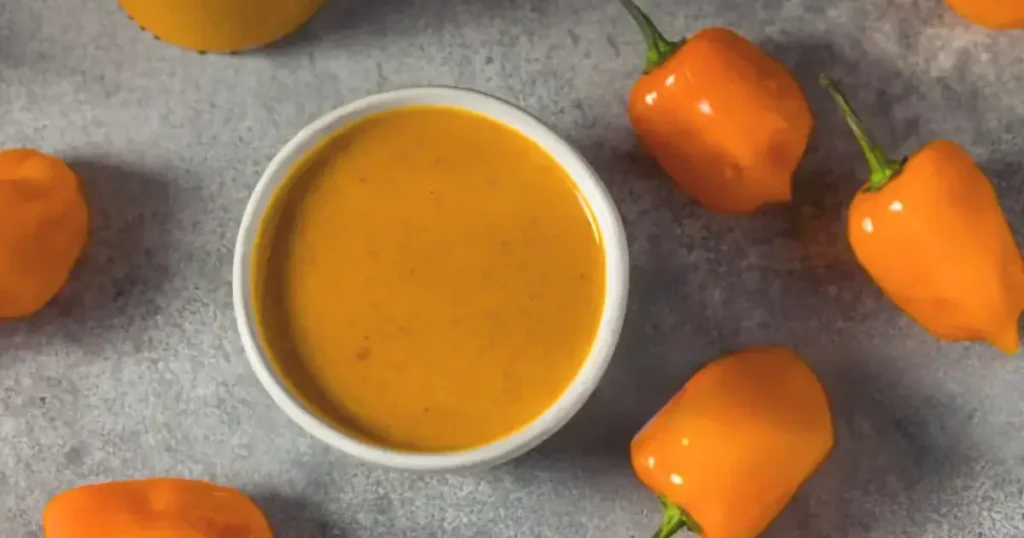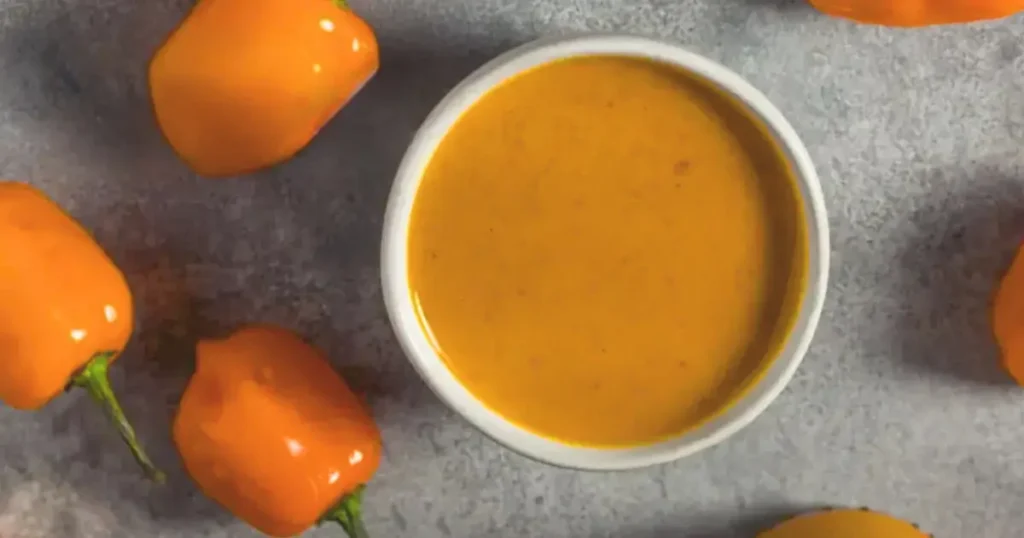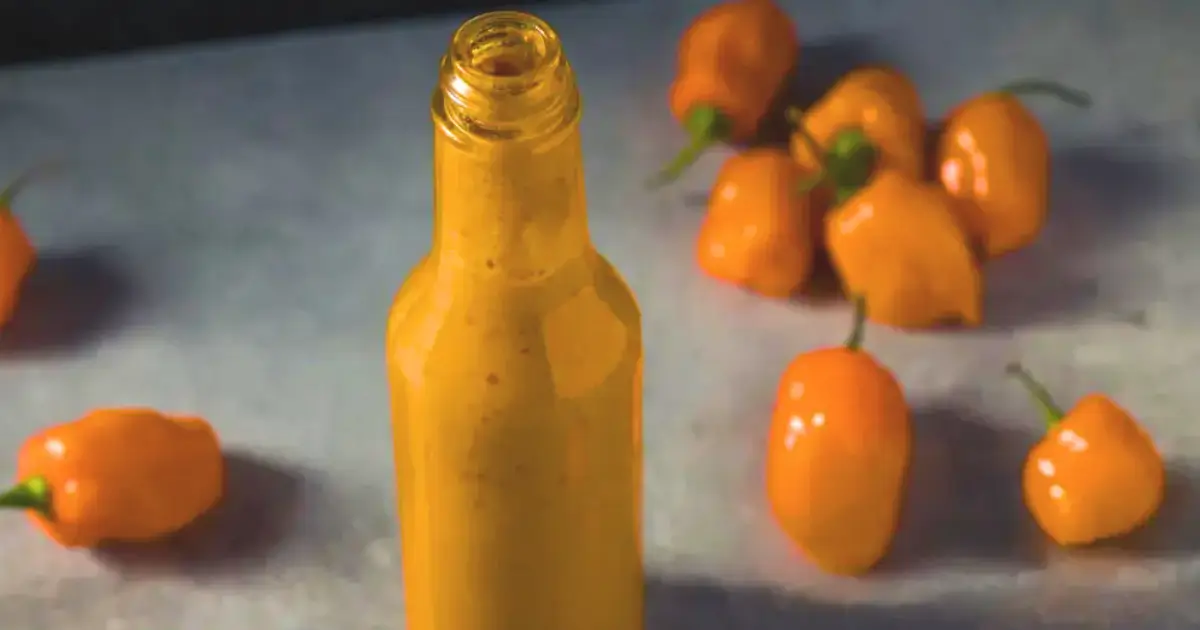Table of Contents
Are you really ready to turn up the heat in your kitchen? Ghost peppers are known for their intense kick and unique flavor. They can make any dish more exciting. Whether you want the best ghost pepper recipes or to make your own hot sauce, these peppers will spark your creativity.
Let’s dive into how ghost peppers can spice up your meals. From savory dishes to best ghost pepper recipes, we’ll explore it all. Get ready for a spicy journey that will leave you wanting more!
Key Takeaways
- Ghost peppers are among the hottest peppers, known for their unique flavor and intense heat.
- Incorporating ghost peppers into your dishes can elevate the taste and heat level.
- You’ll discover various ways to use ghost peppers, including hot sauce and jelly.
- This article showcases six delicious ghost pepper recipes for every heat-seeker.
- Learning about the Scoville scale will help you understand ghost pepper’s heat intensity.
Introduction to Ghost Peppers
Ghost peppers, also known as Bhut Jolokia, come from northeastern India. They are famous for their intense heat, often reaching over 1 million Scoville heat units. This makes them a favorite among chili lovers and chefs.
Ghost peppers have a unique, fruity taste that can make dishes better. This is why the best recipes use them. They add a spicy kick to Indian dishes, making them more flavorful and complex.
There are many types of ghost peppers, each with its own look and heat level. Some are great for hot sauces, while others are better in cooking. Learning how to use these peppers can make your cooking more exciting.
| Ghost Pepper Variety | Flavor Profile | Heat Level (SHU) | Best Use |
| Bhut Jolokia | Fruity, earthy | 1,041,427 | Hot sauces, Indian dishes |
| Red Ghost Pepper | Fruity, slightly sweet | 1,200,000 | Pickling, salsas |
| Yellow Ghost Pepper | Fruity, citrus notes | 1,250,000 | Chutneys, marinades |
Understanding the Heat: Scoville Ratings
The Scoville scale is the preferred scale for measuring the heat of a ripe pepper. It shows how hot different peppers are, like ghost peppers. This scale uses numbers to show how much capsaicin is in a pepper. Knowing Scoville ratings helps you handle spicy foods, especially with ghost peppers.
Ghost peppers, or Bhut Jolokia, are incredibly hot. They have over 1 million Scoville heat units (SHU). Jalapeños, for example, are much milder, with 2,500 to 8,000 SHU. This info is key for those trying spicy recipes, helping you control the heat.
| Pepper Variety | Scoville Rating (SHU) |
| Jalapeño | 2,500 – 8,000 |
| Habanero | 100,000 – 350,000 |
| Ghost Pepper (Bhut Jolokia) | 1,000,000+ |
| Carolina Reaper | 1,400,000 – 2,200,000 |
Knowing about different pepper heat levels lets you adjust your ghost pepper recipes. It’s all about the Scoville ratings. This knowledge helps you confidently use ghost peppers in your cooking.
Best Ghost Pepper Recipes
Ghost peppers add a fiery kick to your dishes. Here are some top ghost pepper recipes to try at home.
Spicy Ghost Pepper Hot Sauce Recipe
Making your own hot sauce with ghost peppers is easy. It lets you control the heat and flavor. Here’s how to make it:
- Gather the following ingredients:
- 2-3 ghost peppers, stems removed
- 1 cup vinegar (white or apple cider)
- 2 cloves garlic, minced
- 1 teaspoon salt
- 1 tablespoon sugar (optional)
Blend all ingredients until smooth.
Pour the mixture into a saucepan and simmer for 10-15 minutes to allow flavors to meld.
Let it cool, then transfer to a bottle or jar. Use sparingly on your favorite dishes!
Classic Indian Ghost Pepper Dishes
Indian cuisine is famous for its ghost pepper dishes. Here are some of the best:
- Bhut Jolokia Chutney: A tangy and spicy accompaniment ideal for grilled meats or as a spread.
- Ghost Pepper Curry: A rich and creamy curry that combines the heat of ghost peppers with coconut milk and spices, creating a delightful dish for rice or naan.
- Stuffed Ghost Peppers: Tender peppers filled with spiced potatoes and cheese, baked to perfection.
These dishes not only excite your taste buds but also highlight the cultural and culinary traditions of ghost peppers.
| Dish | Key Ingredients | Heat Level |
| Bhut Jolokia Chutney | Ghost peppers, vinegar, sugar, garlic | Very Hot |
| Ghost Pepper Curry | Coconut milk, spices, ghost peppers | Hot |
| Stuffed Ghost Peppers | Potatoes, cheese, spices | Medium to Hot |
Creating Delicious Ghost Pepper Jelly
Making your own ghost pepper jelly is a fun mix of heat and sweetness. It’s great with cheeses, meats, and even on toasted bread. You’ll need fresh ghost peppers, sugar, pectin, and apple cider vinegar to get started.
First, prepare the ghost peppers. Wear gloves to avoid skin irritation from their heat. Remove the stems and seeds, then chop finely. Mix the peppers with vinegar, sugar, and pectin in a saucepan.
- Stir constantly over medium heat to dissolve sugar and activate pectin.
- Pour the hot mixture into sterilized jars for a proper seal.
- Let the jars cool to room temperature before storing them in a cool, dark space.
Feel free to try different spicy jelly recipes. Adding fruits like mango or peach can balance the heat with sweetness. This makes your preserves with ghost peppers even more flavorful.
Proper storage keeps your ghost pepper jelly fresh. Make sure jars are tightly sealed and stored in a cool area. This jelly can last for months, adding a spicy kick to your pantry.
Use this jelly as a glaze for grilled meats or on crackers. Its versatility will impress anyone who tries it.
Easy Vegetarian Ghost Pepper Recipes
Looking to spice up your vegetarian meals? Ghost peppers can add an exciting kick. Here are two easy vegetarian ghost pepper recipes. They show off the pepper’s unique flavor and are meat-free. These recipes are perfect for adventurous eaters and will wow your guests.
Ghost Pepper Corn Chowder
This creamy chowder combines sweet corn with ghost pepper’s fiery heat. The flavors balance beautifully, and the aroma is inviting. Start by sautéing onions and garlic, then add diced potatoes and vegetable broth.
Add sweet corn and diced ghost peppers. Let it cook until tender. Blend it for a smooth texture, then add heavy cream for extra richness.
Stuffed Ghost Pepper Tacos
Use ghost peppers as taco shells for a unique twist. Halve the peppers, remove seeds, and roast until tender. Fill them with a mix of black beans, corn, diced tomatoes, and spices.
Top with avocado and fresh cilantro for a stunning dish. These tacos are among the best ghost pepper recipes for vegetarians.
These easy vegetarian ghost pepper recipes let you explore adventurous cooking while keeping your diet healthy and tasty. Serve these dishes at your next gathering. Watch as everyone’s faces light up with delight and surprise.

Exploring Chinese Influences with Ghost Peppers
The use of ghost pepper in Chinese cooking is growing. It adds a new twist to traditional flavors in spicy dishes. This fiery pepper is loved in places like Sichuan, where spice and flavor blend perfectly.
Classic dishes like Kung Pao chicken and spicy stir-fry showcase ghost peppers’ power. They enhance the taste of bold ingredients without taking over. For example, in Kung Pao chicken, the pepper adds a special warmth that pairs well with peanuts and veggies.
When using ghost pepper in Chinese cooking, finding the right balance is key. Start with small amounts and adjust to your liking. This way, you get to enjoy all the flavors that make spicy Chinese dishes special.
Authenticity is key to making these dishes truly special. Use fresh veggies, top-notch soy sauce, and strong spices. These ingredients bring the rich traditions to life while adding the ghost pepper’s exciting heat.
What to Do with Ghost Peppers After Picking
After picking ghost peppers, you might wonder what to do next. These fiery fruits can be used in many ways. One great option is to preserve them, so you can enjoy their taste later.
Here are some ways to preserve ghost peppers:
- Drying: Cut the peppers and dry them completely. You can use a dehydrator or a low-heat oven.
- Freezing: Put whole or chopped peppers in freezer bags. They stay hot for up to six months.
- Pickling: Soak ghost peppers in vinegar for a tangy flavor. They’re great on sandwiches and salads.
Ghost peppers are versatile in cooking. You can make spicy oils for pasta and meats. Or, blend them with tomatoes and herbs to make a hot salsa.
Be careful when handling ghost peppers. Wear gloves to avoid skin irritation. Keep your preserved peppers in a cool, dark spot. This way, you can enjoy their heat all year long.
Conclusion
Exploring ghost peppers opens up a world of exciting culinary adventures. You’ll find recipes that add a bold kick to your cooking. These spicy tips help you get creative in the kitchen.
Ghost peppers are not just for cooking; they carry cultural and global significance. They add a unique heat to your dishes. This makes every meal memorable and enjoyable.
Ghost peppers let your imagination run wild. By trying different recipes, you can master adding heat to your food. Your dishes will leave everyone wanting more.

FAQ
What is a ghost pepper hot sauce recipe?
A ghost pepper hot sauce recipe mixes ghost peppers, vinegar, garlic, and salt. You blend these to make a spicy sauce. It adds flavor to many dishes.
What are the best ghost pepper recipes for Indian cuisine?
Top ghost pepper recipes in Indian cuisine include Bhut Jolokia chutneys, curries, and spicy pickles. These dishes highlight the ghost pepper’s intense heat and flavor, showing its cultural importance.
Can you suggest easy vegetarian ghost pepper recipes?
Yes! Try Ghost Pepper Corn Chowder, a creamy soup with sweet corn and ghost peppers. Or, make Stuffed Ghost Pepper Tacos with ghost pepper shells, beans, and veggies for a tasty meal.
How do I make ghost pepper jelly?
To make ghost pepper jelly, mix sugar, vinegar, pectin, and chopped ghost peppers. Boil it, then fill sterilized jars. It’s a spicy-sweet condiment great with meats and cheeses.
What should I do with ghost peppers after picking them?
After picking ghost peppers, dry, freeze, or pickle them. You can also infuse oils or make salsas. These methods let you use ghost peppers in creative ways.
What are some popular ghost pepper recipes in Chinese cuisine?
In Chinese cuisine, try Kung Pao chicken and spicy Sichuan-style stir-fry. These recipes use ghost peppers to add heat while keeping the dish’s rich flavors.
How can I adjust the heat level in ghost pepper recipes?
To adjust the heat, use fewer peppers or remove seeds and membranes. You can also balance the dish with dairy like yogurt or cream.

